ISSN ONLINE(2320-9801) PRINT (2320-9798)
ISSN ONLINE(2320-9801) PRINT (2320-9798)
K.Praveen kumar1, K.Sanjeeva Rao2, V.Mallikarjuna Rao3, N.Anjaneya Varaprasad4, C.MuraliMohan5,
|
| Related article at Pubmed, Scholar Google |
Visit for more related articles at International Journal of Innovative Research in Computer and Communication Engineering
The data link, mobile satellite, base station, flight termination system and in signal monitoring applications helical antennas are popularly used. Present paper coaxial feed wide band circular polarized helical antenna with three turns of helix structure is designed to operate at 3GHz in Ansoft HFSS software. The results of return loss, impedance, VSWR, gain are studied and presented.
Keywords |
| Pitch of Helix, Gain, Return Loss |
INTRODUCTION |
| The Helical antennas are popular from long time in the applications of VHF to microwave frequency. A Helical antenna consists of conducting wire wound in the form of helix and are mounted over a ground plane. The feed line is connected between bottom of helix and ground plane. It operates either in normal mode or axial mode. In axial mode the dimensions of helix are comparable to wave length. It functions as directional antenna radiates circularly polarized radio waves. To prevent the radiation in other direction other end of helix is terminated with flat metal sheet which reflects waves to forward. The direction of twist of helix determine the polarization of radio waves, left handed helix radiates left circularly polarized radio waves, right handed helix radiates right circularly polarized radio waves. |
| The dimensions of the helix are determined by the wavelength λ of the radio waves used, which depends on the frequency. In axial-mode operation, the spacing between the coils should be approximately one-quarter of the wavelength (λ/4), and the diameter of the coils should be approximately the wavelength divided by pi (λ/π). The length of the coil determines how directional the antenna will be as well as its gain; longer antennas will be more sensitive in the direction in which they point |
II. DESIGN |
| The helical antenna is formed by winding a wire on a cylindrical surface while maintaining constant spacing between turns. |
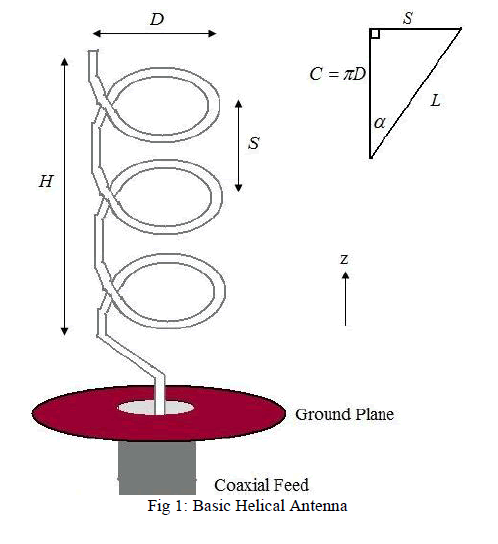 |
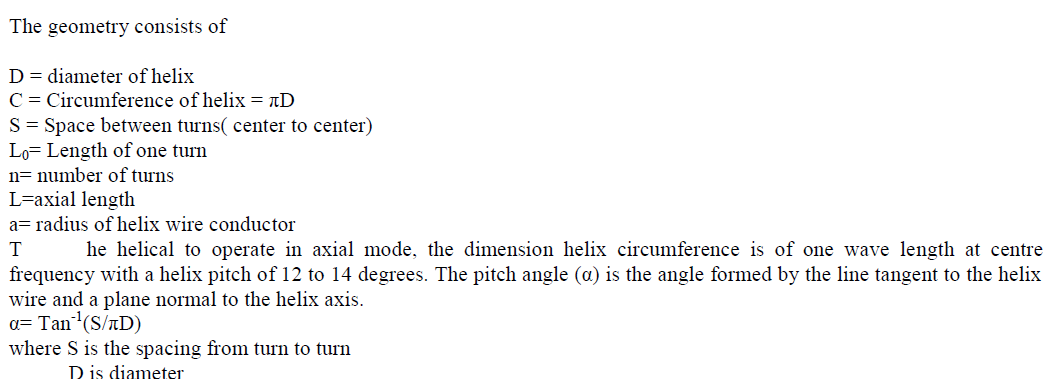 |
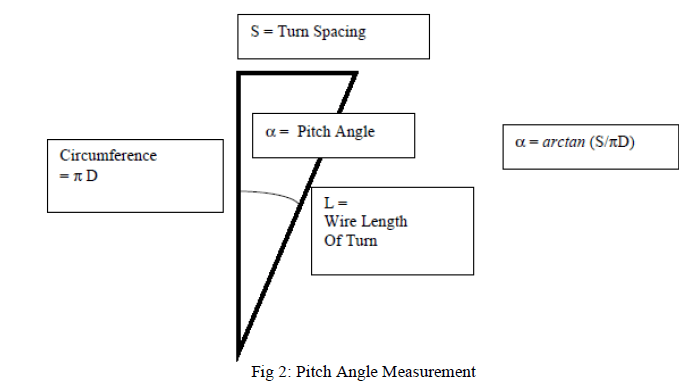 |
| The triangle explains clearly the relationships between the circumference, diameter, pitch, turn spacing, and wire length. The helix radius corresponding to a circumference for one turn is 3λ/4<C<4λ/3. The sense o f circular polarization depends on the sense of winding of helix. When the wound in left hand sense left hand circular polarization exists. The design formulas of gain, and half power beam width provided by J.D.Kraus. |
 |
III. NUMERICAL DESIGN |
| Present design of coaxial feed helical antenna with three helix turns were designed to operate at 2.4GHz. the dimension are, helix diameter 5.963cm, spacing 4.155cm, number of turns 3, diameter of wire 1.057cm, winding direction is right. The ground dimensions are 21.146cm, 21.146cm respectively |
IV. SOFTWARE FOR DESIGN |
| Availability of latest software, it became easy for upcoming antenna designers to execute and test their proposals and compare with conventional designs. Present proposal is designed in Ansoft HFSS version 13 which use Finite element method for analysis of structure. |
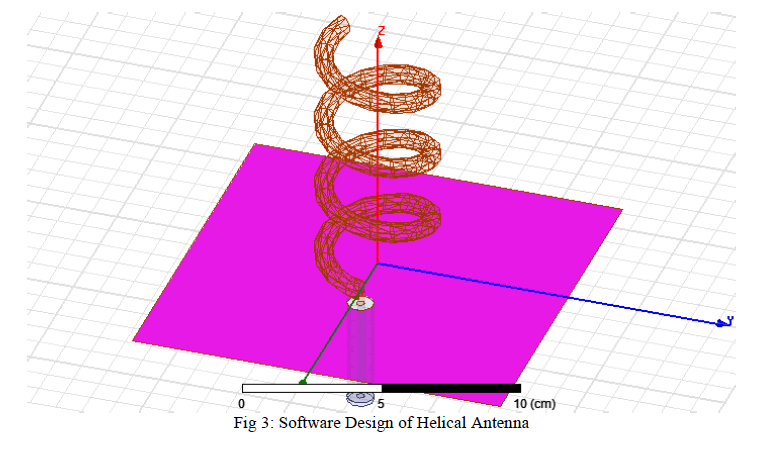 |
V. RESULTS AND DISCUSSION |
A. Return Loss |
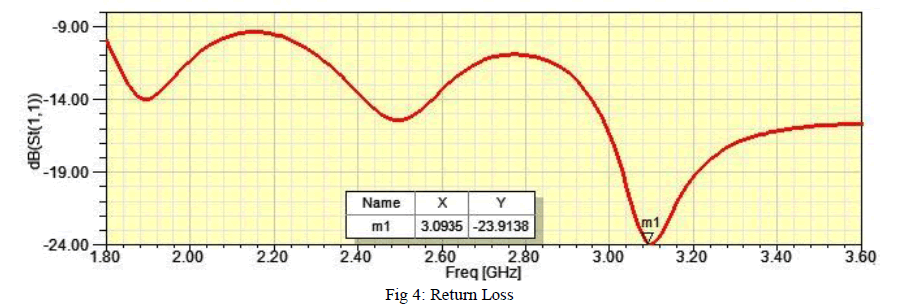 |
Impedance |
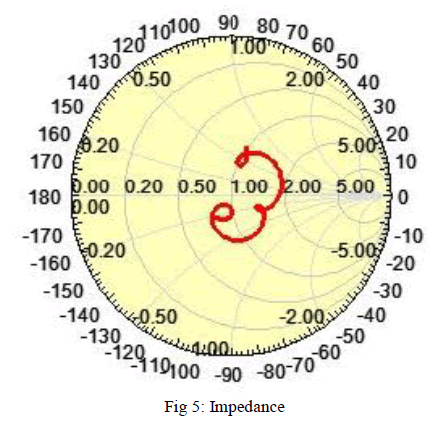 |
C. Gain (LHCP) |
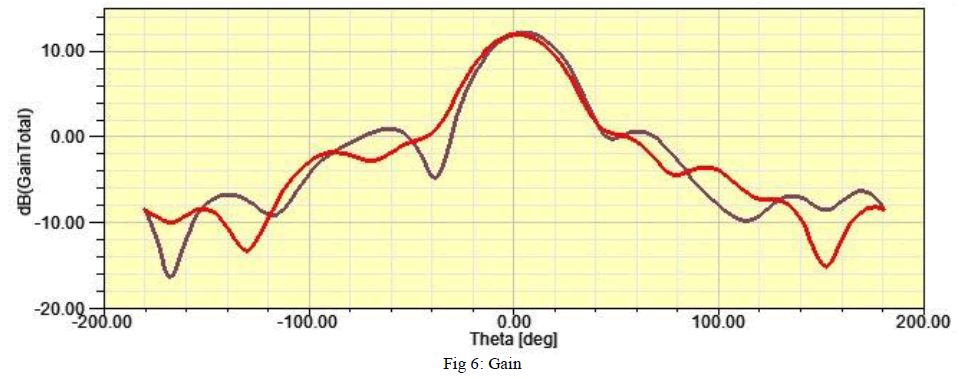 |
D. Radiation Pattern |
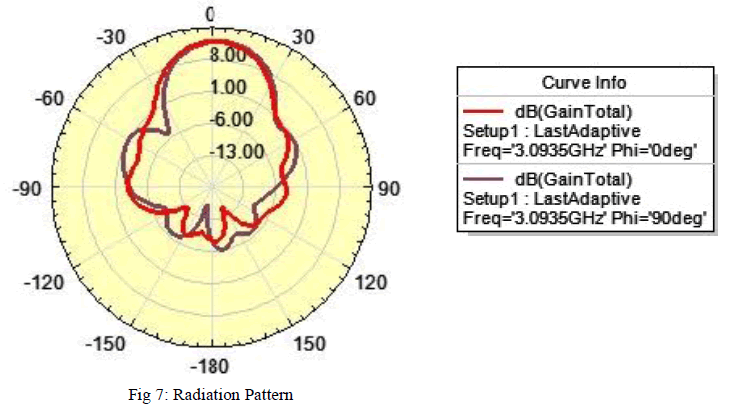 |
E. Gain (Polar Plot) |
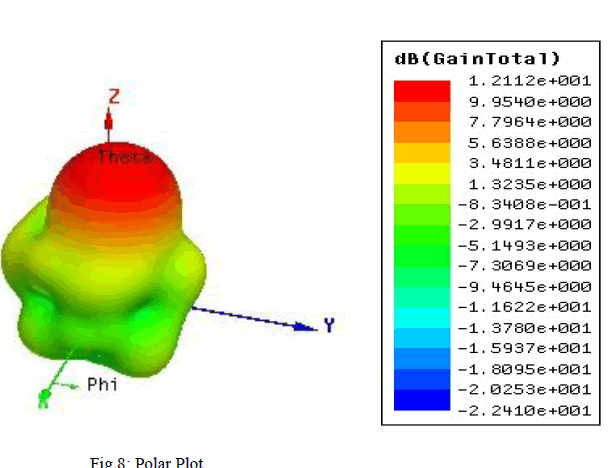 |
F. Axial Ratio |
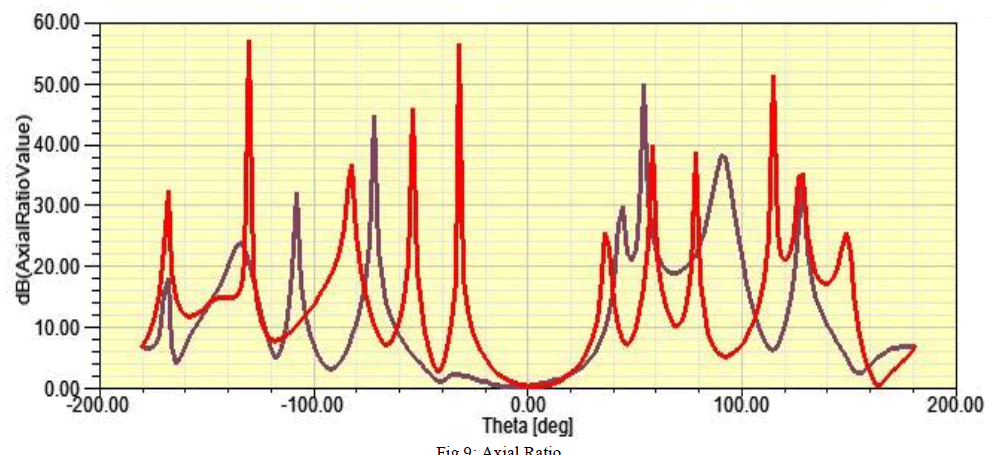 |
VI. ANTENNA PARAMETERS |
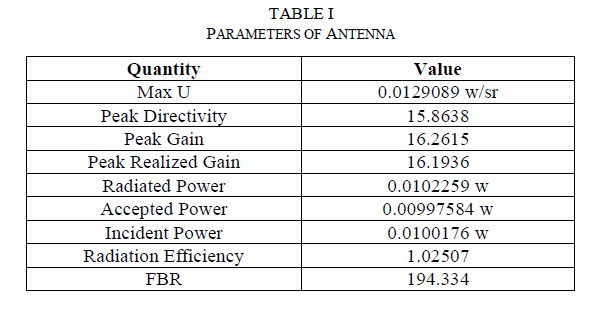 |
VII. CONCLUSION |
| The helical antenna parameters are investigated by designing the structure to operate at 3GHz, in Ansoft HFSS. Here one point we clearly observed that the orientation of helix effects the circular polarization to weather RHCP or LHCP. This structure is very well suitable for WiFi applications. |
ACKNOWLEDGMENT |
| The author want to thank Dr.Habibulla Khan, Professor and HOD Dept of ECE KL University. |
References |
|